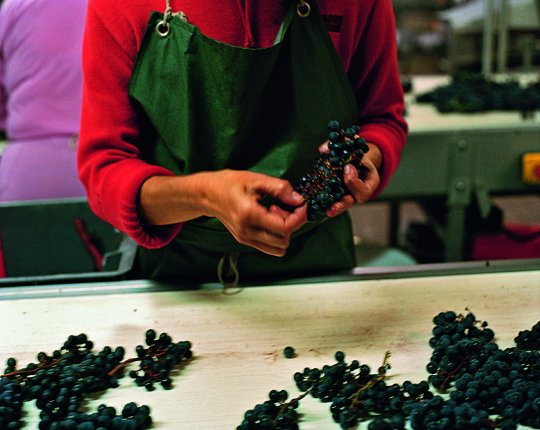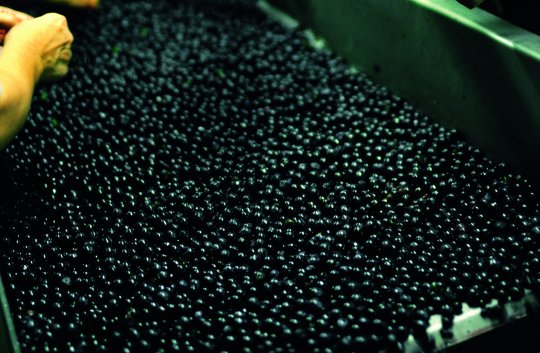Sorting in the winery is made possible by various equipment that makes up the sorting lines. Sorting can be manual with the help of vibrating or non-vibrating manual sorting tables or automatic using the principle of optical sorting or a densimetric bath.
The berries, even if healthy, are not always of good quality, such as the pink berries sometimes found in the harvest. This can be due to a high yield, flowering that was disrupted by the weather or severe water stress.
The damaged berries can be of several sorts, they can be damaged by agricultural machinery or by fungal diseases (powdery or downy mildew, or Botrytis). When the berries are affected by one of these diseases, it is possible to have not only quantitative losses, but also qualitative losses which impact the must and later the wine. The risk and nature of organoleptic impacts depend on the type of disease.


